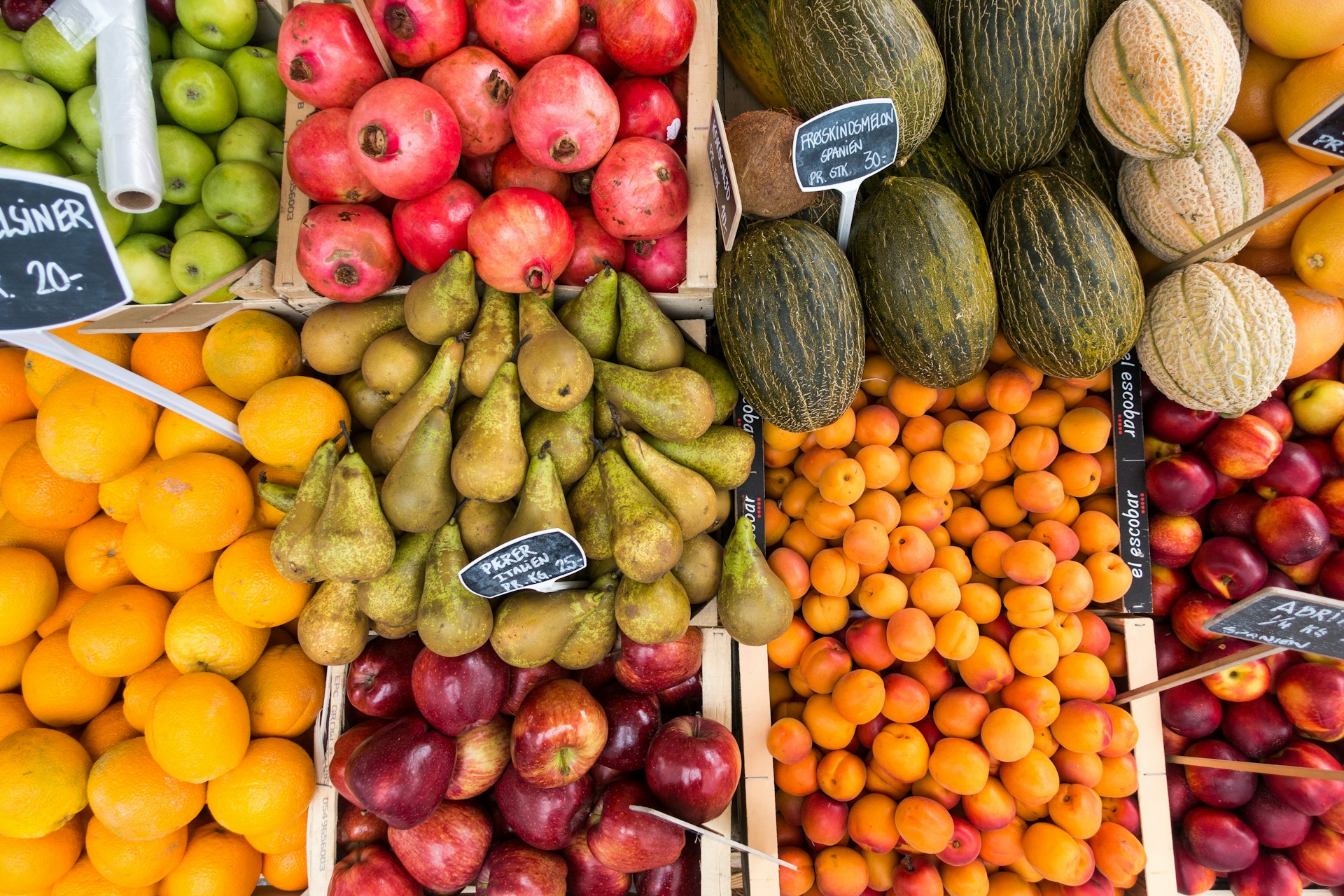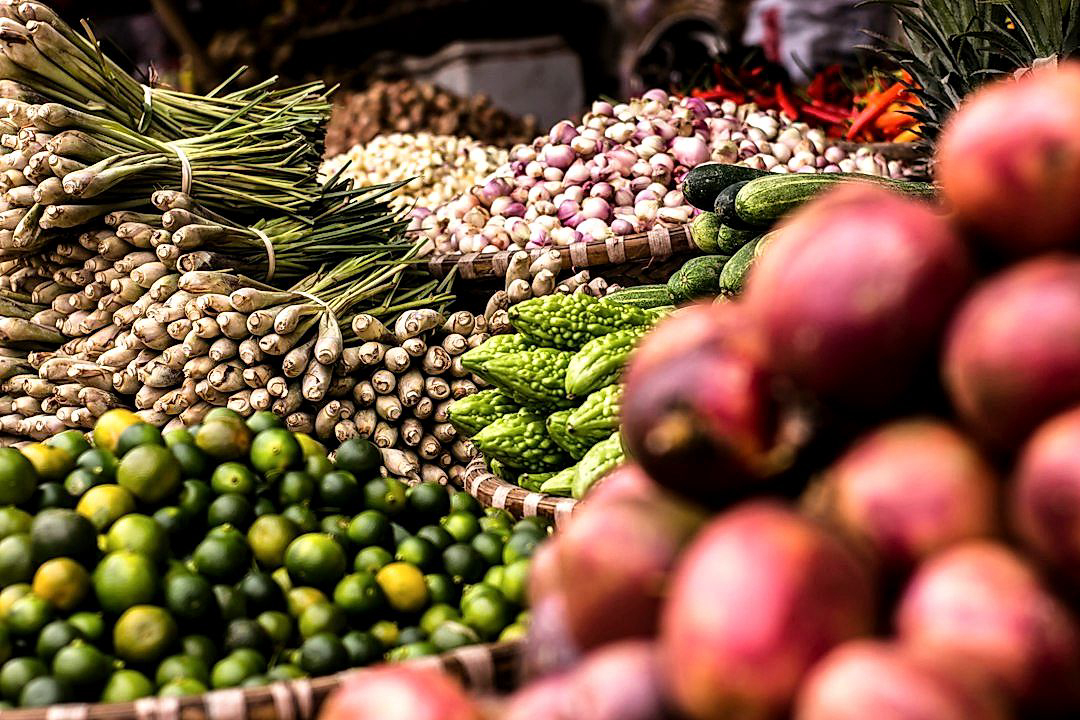Packaging in the produce industry plays a pivotal role in maintaining the freshness and prolonging the shelf life of fruits, vegetables, and other related products.
However, the environmental implications of these packaging solutions have recently been under rigorous scrutiny.
More stringent environmental regulations have been enforced worldwide leading to essential shifts in this sector.
This piece evaluates the latest regulatory changes legislation has placed on the packaging sphere.
The ways in which these regulations are positively affecting our environment and encouraging sustainable practices within the industry will also be explored.
It is vital to understand these impacts to promote responsible production and consumption patterns in our society.
Impactful Environmental Regulations On Produce Packaging
1. Ban on Single-Use Plastic Packaging
The ban on single-use plastic packaging has become one of the foremost regulations affecting the produce packaging industry.
This regulation is primarily put in place due to the negative environmental impact caused by the production and disposal of such packaging.
Single-use plastic packaging has become ubiquitous in the food industry, and its convenience and cost-effectiveness have made it the preferred choice for many manufacturers.
However, the overwhelming quantity of single-use plastic packaging waste finds its way into our oceans, contributing to marine pollution and a significant loss of marine biodiversity.
Thus, the regulation to ban single-use plastic packaging has emerged as a critical move towards mitigating this grave environmental concern.
Transitioning away from single-use plastic packaging does not only demand a shift in packaging materials, but it also requires a fundamental shift in the operations of the packaging industry.
The regulation has pushed the industry to explore alternative, sustainable materials like bioplastics, paper, and other reusable or recyclable options.
This mandatory transition has resulted in higher operational costs for many businesses due to the high cost of sustainable materials and the need for new machinery for production and processing.
Alongside, the need for robust recycling systems and supportive infrastructure has also become a critical factor for successful implementation of this regulation.
In spite of these challenges, many argue that the long-term benefits of this move will far outweigh the immediate financial implications.
The ban is also expected to foster innovation and creativity in the packaging industry, pushing companies to incorporate environmental sustainability in their business models and operations.
Moreover, this regulation has led to increased consumer awareness about the environmental implications of single-use plastic packaging.
Consequently, a growing number of consumers are now demanding more eco-friendly packaging options, forcing companies to comply with the regulation or risk losing their customer base.
This shift in consumer attitude, combined with the stringent regulation, has the potential to transform the produce packaging industry on a global scale.
In this sense, the ban on single-use plastic packaging, though challenging in the short-term, marks a significant step towards a sustainable future for our planet.
2. Mandatory Recycling Program Implementation
One of the most impactful environmental regulations on produce packaging is the implementation of mandatory recycling programs.
These programs necessitate that all companies involved in the production of packaging must participate in recycling efforts, thus ensuring that waste is minimized.
This can be viewed as a crucial part of a broader, more comprehensive environmental strategy aimed at reducing the overall footprint of the packaging industry.
The need for mandatory recycling program is underpinned by the fact that recyclable packaging is often tossed into general waste due to a lack of recycling facilities or simply out of convenience.
Research indicates that mandatory recycling programs can have a significant impact on this behavior, significantly increasing recycling rates.
From a legislative perspective, this means implementing regulations that enforce penalties for non-compliance, thus incentivizing companies to integrate recycling into their workflows.
Mandatory recycling programs can potentially revolutionize the packaging industry, leading to significant reductions in waste and improvements in the efficiency of material use.
Further, companies that comply with these regulations are not only contributing to environmental sustainability, but they may also benefit from a positive public image as consumers increasingly favor businesses that prioritize eco-friendly practices.
Consequently, mandatory recycling regulations can stimulate businesses to rethink their packaging strategies and incorporate more recyclable materials in their designs.
In turn, this has the potential to drive innovation and technological advancements in recycling processes and technologies.
However, while the potential benefits are clear, the implementation of mandatory recycling programs is not without its challenges.
These include infrastructure needs, cost implications, and the requirement for extensive public education and engagement to ensure success.
Despite these challenges, the trend towards implementing mandatory recycling programs around the world is an encouraging sign that we are moving in the right direction towards sustainable packaging practices.
Ultimately, the implementation of mandatory recycling programs displays a clear commitment to environmental sustainability and signifies a vital step towards achieving a greener and more sustainable future.
This commitment sends a strong message that all stakeholders in the packaging industry share responsibility for the environment, and it sets a precedent for other industries to follow suit.
3. Production Emissions Regulation
When looking at impactful environmental regulations on produce packaging, a key area of consideration centers around the regulation of production emissions.
These regulations play a vital role in controlling the output of pollutants during the production process of packaging materials.
Current environmental standards dictate that companies not exceed certain levels of emissions in order to minimize the impact on the environment.
This has an enormous effect on industries creating produce packaging as it forces them to invest in cleaner, greener production methods.
These regulations pose considerable challenges for industries reliant on traditional production processes which tend to be heavier pollutants.
They necessitate a significant redesign and adaptation of production mechanisms in order to reduce emissions.
Investment in greener technologies becomes crucial for companies to comply with environmental regulations.
However, adoption of cleaner production mechanisms not only results in lower emission levels but it can also create significant cost savings for businesses in the long run.
Energy-efficient mechanisms translate into lesser resource usage which can substantially bring down operational costs.
Additionally, these regulations often come hand in hand with financial incentives aiming to boost environmental sustainability.
These may range from tax breaks for companies reducing their carbon footprints, to subsidies for investments in renewable energy sources.
The push for cleaner production processes is thereby both a financial and an environmental incentive, creating a win-win situation for industries and the planet.
In essence, production emissions regulation presents an opportunity for companies to transform their processes, not only to meet legal requirements but also to leverage the sustainable benefits these changes bring.
This is why many organizations now view environmental regulations not as a burden, but as an incentive to innovate and improve.
Thus, the regulation of production emissions in the context of produce packaging can be seen as a powerful tool for fostering greater environmental sustainability and corporate responsibility.
Consequently, it’s evident that these regulations are instrumental in driving a greener future for the produce packaging industry.
4. Mandated Biodegradable Packaging Materials
As the global community grapples with environmental conservation, there is increased pressure on the need for environmentally friendly packaging.
Subsequently, one of the most impactful regulations touching on produce packaging is the mandate for companies to utilize biodegradable packaging materials.
Biodegradable packaging materials, as the name suggests, are packaging materials that can decompose naturally in the environment, leaving no harmful traces.
This is essential in reducing the impact of packaging waste on the environment, consequently providing a sustainability solution.
Moreover, the PUSH for this isn’t purely from a legislative standpoint, but consumers are increasingly seeking to engage with brands that exhibit more responsible environmental behaviour, including sustainable packaging.
Embracing biodegradable packaging materials not only meets legal obligations but also enhances the company’s brand image, thus proving to be a mutually beneficial strategy.
Companies adopting such regulations are thus not only complying with the law but also aligning with the needs and expectations of an environmentally conscious consumer base.
However, implementing a mandate for biodegradable packaging materials is not without its challenges.
The move towards 100% biodegradable packaging modalities can be cost-prohibitive for some small brands or start-ups.
Regulators must therefore take this into consideration and ensure that the legislation does not unfairly burden firms that may not have the resources to switch to biodegradable packaging.
Regulations could include provisions or incentives for businesses that promote recycling and the use of biodegradable materials.
This way, businesses are encouraged to transition smoothly into using more environmentally friendly packaging.
Additionally, there is concern over the lack of clear standards defining what qualifies as biodegradable, which can lead to misinterpretations and confusion.
Regulators will need to provide clear guidelines and definitions to ensure consistency in the adoption of biodegradable packaging.
Thus, while mandated biodegradable packaging materials make for responsible environmental legislation, its successful implementation requires careful deliberations and planning.
The ultimate aim of such regulation should be to promote more sustainable production habits among businesses, with as little disruption to their operations as possible.
5. Pollution Standards for Packaging Production
Pollution standards for packaging production are crucial environmental regulations that aim to control and limit the amount of waste and toxins released into the environment during the production process.
These standards are often laid out by the Environmental Protection Agency (EPA) or other governing bodies, and require manufacturers to comply with set permissible limits of pollution.
Notably, the specific standards may vary depending on the type of pollutant being released and the size and scope of the manufacturing activities.
To enforce these standards, inspections and audits may be conducted periodically, requiring companies to maintain thorough documentation of their manufacturing activities.
Failure to adhere to these pollution standards can result in severe penalties including heavy fines, business closure, and even imprisonment in some cases.
Such strict penalties serve as a strong deterrent and encourage companies to invest in cleaner production practices.
The implementation of pollution standards for packaging production has multiple benefits, including safeguarding ecosystems, improving the health of local communities, and reducing global warming potential.
These standards also stimulate the development and adoption of cleaner production technologies, offering an additional avenue for companies to gain a competitive edge in the market.
However, meeting such standards often involves significant investments in infrastructure and technology.
For some businesses, particularly small and medium-sized enterprises (SMEs), these costs may be prohibitively high.
Moreover, the complexity and ever-evolving nature of environmental regulations can make compliance a challenge for businesses of all size.
This may, in some cases, discourage businesses from innovating or expanding their operations due to the fear of non-compliance risks.
That said, many businesses are finding solutions by creating partnerships and joining initiatives that offer support and guidance in navigating the maze of environmental regulations.
In conclusion, while pollution standards for packaging production may present some challenges, they play an undeniably crucial role in protecting our planet and promoting sustainable business practices.
As we move towards a future defined by the urgent need to combat climate change, these standards will undoubtedly gain even more importance, making it imperative for businesses to adapt and innovate.
6. Enhanced Labelling Requirements
With the escalating global concerns about environmental sustainability, the role of packaging in various industries is becoming increasingly significant.
Enhanced labelling requirements present a crucial opportunity in improving consumer awareness regarding the environmental impact of packaged products.
The fundamental idea is to provide detailed information to consumers about the packaging materials used and their environmental implications, thus encouraging responsible consumer behavior.
>Promoting transparency and clarity through enhanced labeling not only paves the way for consumers to make greener choices, but also challenges manufacturers to adopt more sustainable packaging strategies.
Subsequently, these measures would entail the disclosure of the type and quantity of materials employed, their origin, potential recycling opportunities, and their overall environmental footprint.
Notably, enhanced labelling encompasses mandatory inclusion of recyclability labelling, which can significantly influence the consumer’s decision at the point of purchase.
This step would go a long way in increasing the rates of appropriate recycling and reducing the proportion of packaging that ends up in landfills.
Furthermore, to ensure the utmost effectiveness of this strategy, labelling ought to be standardized and clear, avoiding the use of technical jargon or misleading ‘green’ logos.
In the era of digitization, QR codes can be employed on packaging to deliver comprehensive information about the product packaging’s environmental impact.
Besides the transparency it brings to consumers, enforcing enhanced labelling requirements induces companies to revaluate their packaging strategy, pushing them towards more sustainable alternatives.
Thus, while this regulation impacts the cost and process of packaging, it also provides an opportunity for companies to enhance their corporate image and meet the growing consumer demand for sustainable products.
In turn, the market will reward those businesses that are effectively contributing to environmental protection.
Finally, it is important to note that any progress in implementing enhanced labelling requirements necessitates support from various stakeholders, including governments, packaging manufacturers, and consumers.
The transformative potential of enhanced labelling requirements lies in their ability to inform, engage, and drive change towards a more sustainable packaging culture.
Continuous consumer education and increased awareness are central to successfully reducing the adverse environmental impacts of packaging.
In summary, enhanced labelling requirements serve as an essential tool towards achieving sustainability in the packaging industry, shaping both consumer demand and production processes in a manner beneficial to the planet.
7. Deforestation Restrictions for Paper Packaging
The call for deforestation restrictions for paper packaging has gained momentum in recent years.
This is commendable in the view that the manufacturing process for paper packaging extensively contributes to deforestation.
Unchecked deforestation is worryingly causing habitat destruction and contributing significantly to climate change.
Deforestation restrictions for paper packaging serve as a critical response towards curtailing the pressing issues linked to deforestation and environmental degradation.
Many nations across the globe have begun to introduce stringent regulations aiming to reduce deforestation caused by the production of packaging materials.
It’s worthy of note that, these restrictions are not only applicable to the corporations directly involved in lumbering but also to those industries that use paper as a primary packaging material.
There is a wide-ranging consensus that companies should take responsibility for the lifecycle of their products, starting from the procurement of raw materials to the disposal of end products.
This view springs from the understanding that companies play a central role in contributing to deforestation through their operational activities.
Deforestation restrictions in the form of environmental legislations and guidelines on how companies source their raw materials could serve as a game-changer in the packaging industry.
In order to encourage wider adoption, there should also be a framework for the recognition and reward of companies that adhere to these deforestation standards in their operations.
Interestingly, a growing number of companies have come to appreciate the benefits of adhering to these guidelines, not only for their environmental footprint but also for their brand reputation.
This suggests that deforestation restrictions for paper packaging are likely to spur a shift towards sustainable practices in the packaging industry.
The determinable impact goes beyond merely reducing deforestation rates, but also paves the way for the evolution of sustainable, renewable resources for packaging production.
An example of such renewable resources is the increased use of agricultural residues or the recycling of paper products.
However, in order for the effects of these restrictions to be fully realized, there needs to be a holistic approach encompassing government regulations, corporation compliance, and heightened public awareness on the importance of using sustainable packaging materials.
Furthermore, the success of these deforestation restrictions would also require strong oversight and enforcement to ensure that all stakeholders are held accountable in their contributions towards achieving a sustainable packaging industry.
The Bottom Line
Through the enforcement of significant policies such as the prohibition of single-use plastic packaging, the implementation of mandatory recycling programs and regulation of production emissions, it is evident that a significant focus is placed on the preservation of our environment and the reduction of pollution.
Advocacy for the mandatory use of biodegradable packaging materials, strict pollution standards for packaging production, and enhanced labelling requirements serves to foster a greater sense of awareness and responsibility.
The imposition of deforestation restrictions for paper packaging further reinforces the commitment to balance economic interests with ecological sustainability.
It is clear that these stringent actions are necessary paths to tread, with the interest of not merely preserving our environment, but to ensure its ability to continue to sustain life – a perfect amalgamation of economic progress and environmental conservation.




